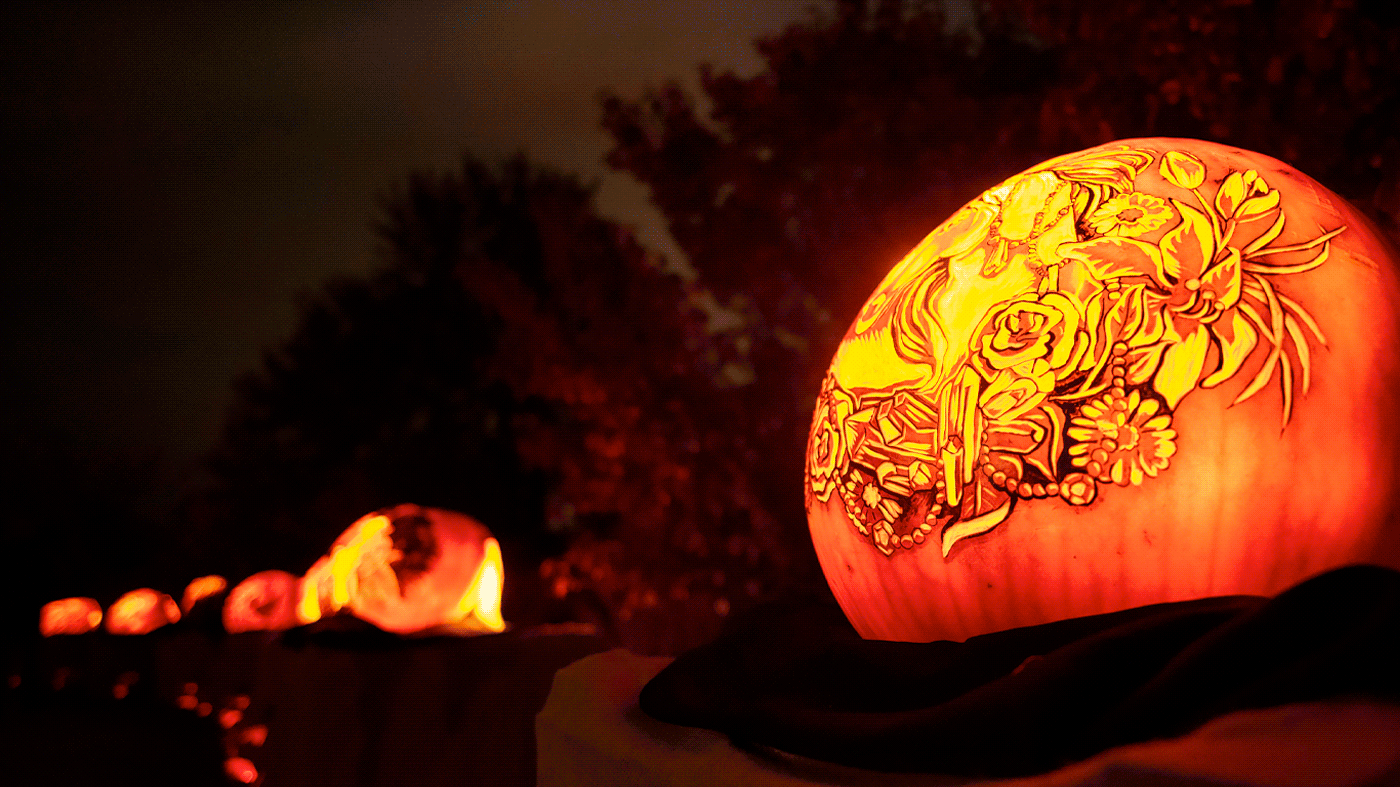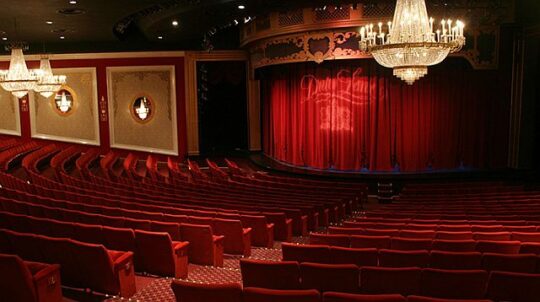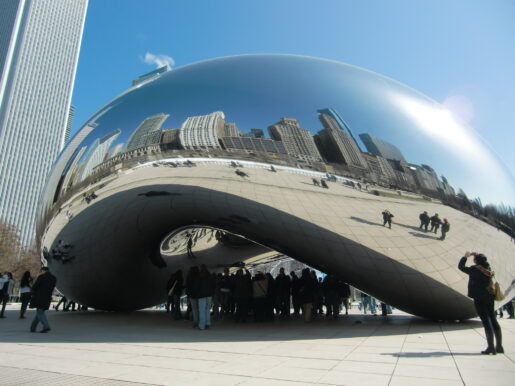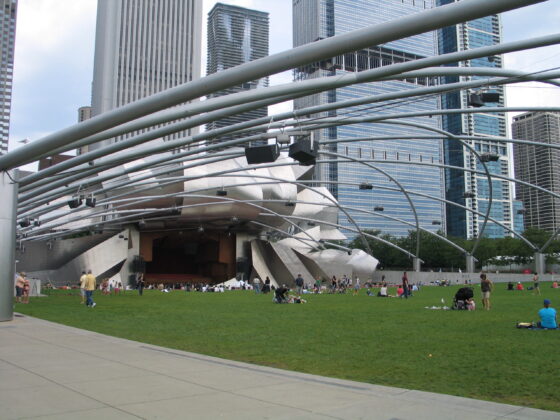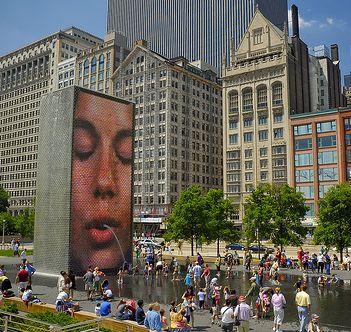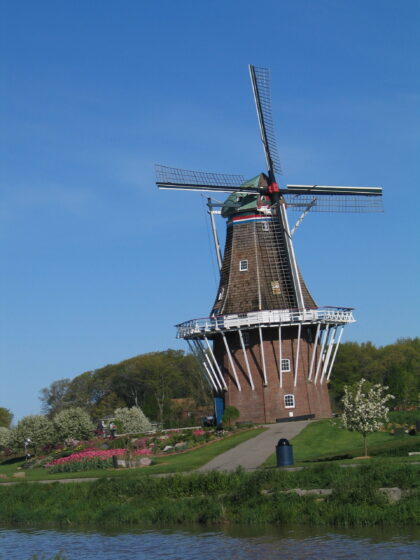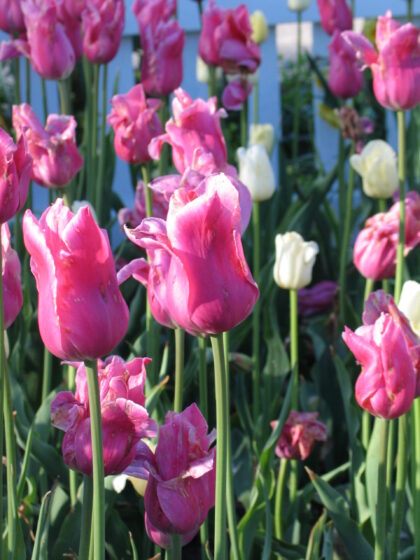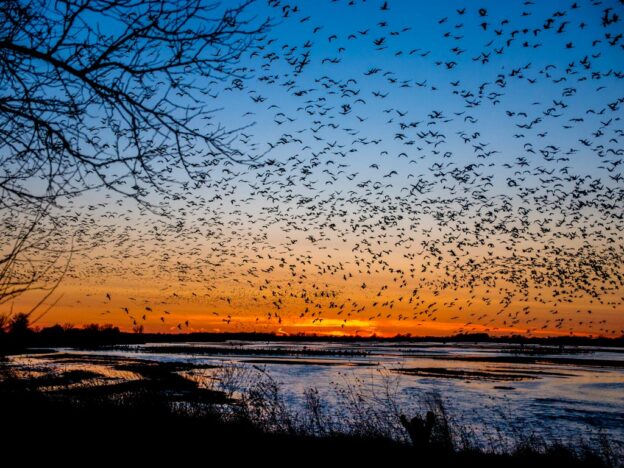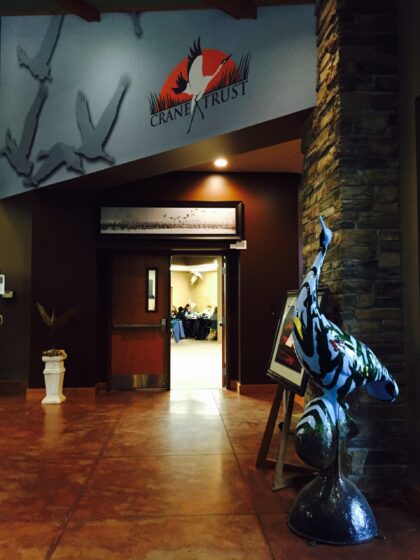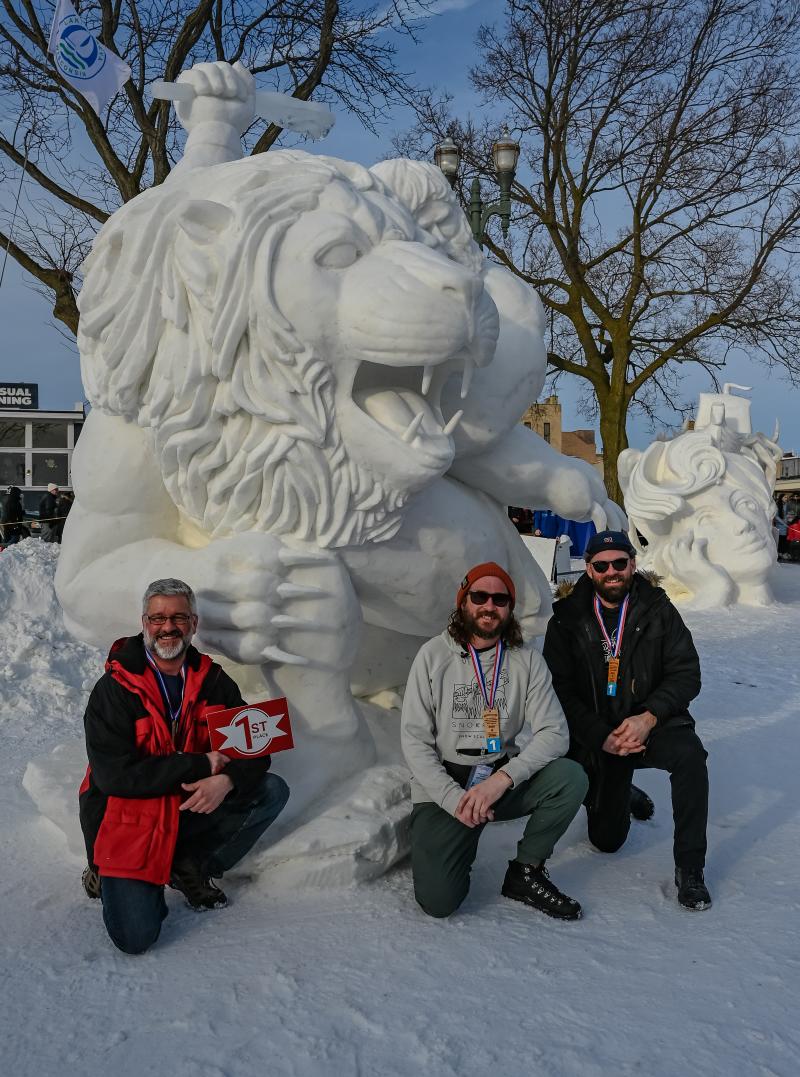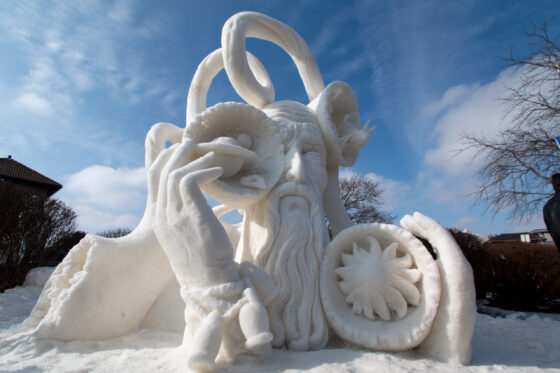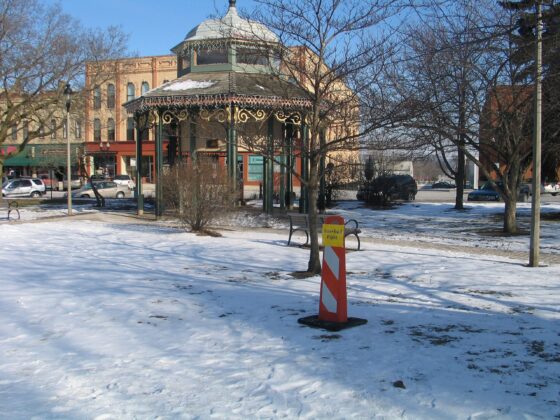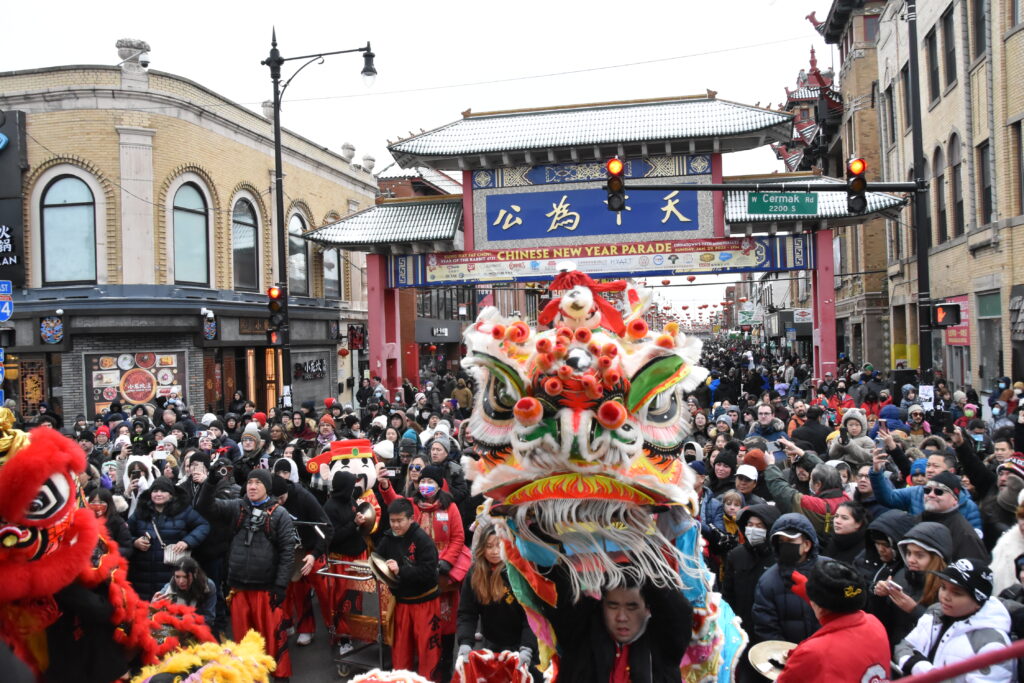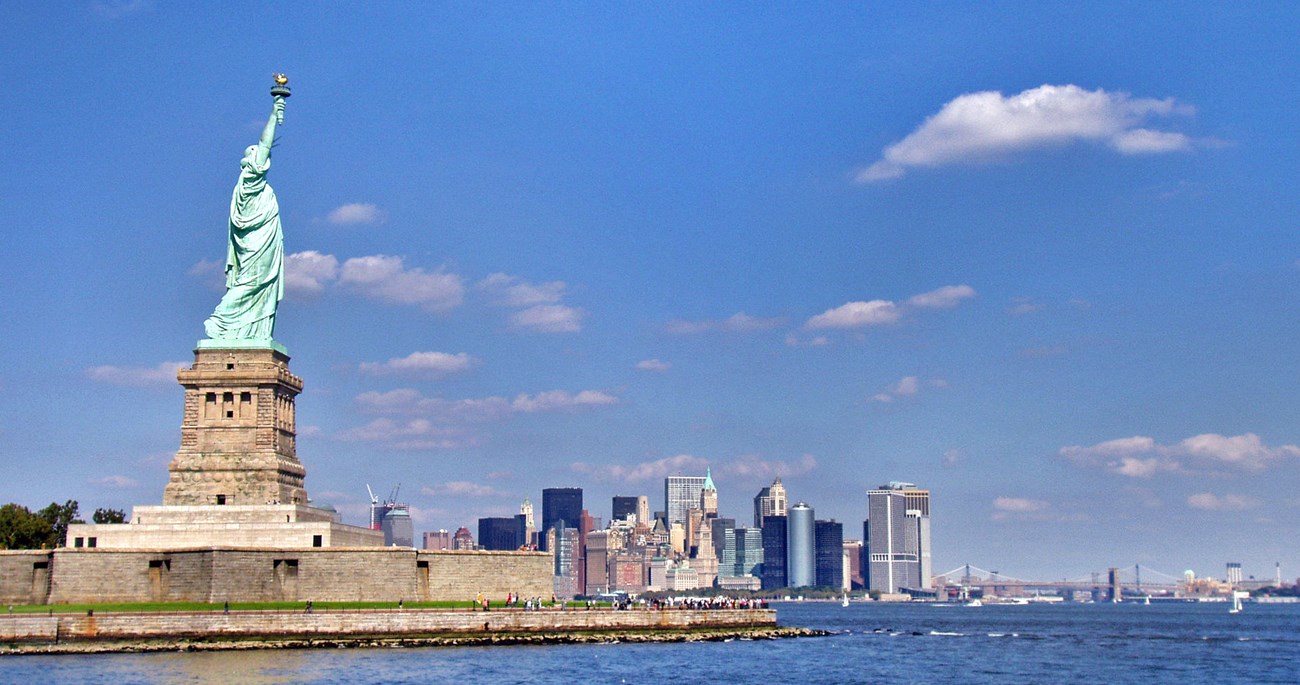
Whether you are planning your first or twentieth trip to “The Big Apple” you might enjoy getting a few ideas from my recent budget friendly quickie visit that included ferry boat rides with close-up views of the Statue of Liberty, spectacular skyline views, visits to Hudson Yards Shops, Staten Island, Battery Park, Guggenheim Museum of Art, the High Line, an off-Broadway show and more. I’ll also give you a few alternative ideas and insights into some cheap eats along the way.
My wife and I have visited New York City many times over the years including vacations and business trips. We live in Chicago but enjoy getting a jolt of the unique intense high-octane energy of Manhattan.
On this trip I wanted to do something a little different, not spend a lot of money, not wander aimlessly and just basically feel the city.
The idea was to spend two nights, giving us an arrival evening plus one full day and a half in NYC.
It was a comfortable three-and-a-half-hour journey on the Amtrak “Vermonter” from Springfield, MA to the Moynihan Train Hall across from Penn Station, arriving about 6:45 PM.
The train had free Internet access so we were able to research ideas about where to get dinner and begin our adventure. We were approximately 20 minutes late, which is unfortunately quite common for Amtrak schedules. So, if travelling by Amtrak never assume you will be on time.
The Moynihan Terminal which opened in 2021 is very spacious, clean and modern. Since it was getting late and we needed to get to our hotel and check-in, my wife who typically dislikes food courts, suggested that we simply grab something there, then maybe go for a drink or appetizers later.
The exceptionally nice food court offered a variety of options provided by local establishments. None of the usual mall standards like Sbarro or Panda Express. Since it’s New York, we opted to split a generous pastrami sandwich on rye with a potato pancake side from the aptly named Pastrami Queen. A central seating option offered waitress-delivered drinks and featured a live DJ spinning tunes. Actually, not a bad way to begin our visit.
After about a 45-minute nosh we made our way by foot (about 10 minutes) to the Pestana CR7, an oddly named Midtown boutique hotel at 39th Street just off of 9th Avenue. The lobby and rooms have a sleek nouveaux midcentury vibe. Our guest room was not large but very clean and comfortable with Nespresso maker, refrigerator, large HD-TV and High-Speed Internet access.
Complimentary bagels and croissants are provided in the morning. Fresh brewed coffee, iced water and apples are available in the lobby all day. The staff was exceptionally courteous and accommodating, making this a very pleasant stay. Room for two nights with taxes and fees was about $425. A $50.00 “resort fee” that put it over $400.00, was the only irritating part of the experience but this fee seems to be pretty common at most NYC hotels.
They do have an exercise room and a nice outdoor patio if you have time to avail yourself of these amenities. Overall, I would not hesitate to highly recommend this hotel. By the way, there is a Hyatt Place next door, plus a Holiday Inn Express and Hampton Inn across the street if you care to comparison shop.
After checking-in and freshening up a bit we took a stroll out to Times Square to get in on a bit of the madness that is Midtown Manhattan at night. We’ve done this on many occasions before and claimed we did not need to do it again but this over-the-top human circus never fails to disappoint. The million mega-watt lights and crush of humanity from every corner of the world is beyond compare.
After about an hour of observation and a half dozen selfies we sauntered back to the Pestano stopping to pick up chocolate éclairs at a local bakery to enjoy with our Nespresso for a late-night snack.
We had a long day and were ready to chill. Also, I needed to finalize our schedule for the next day. However, anyone reading this with a little more energy might want to consider checking out nearby Birdland for some late-night jazz or any of the myriad activities in and around Times Square. You can explore into the wee hours but keep in mind you may want to get a reasonable start in the morning.
So, here’s how we spent the next day. Keep in mind we are not “crack of dawn” people, so, feel free to adjust to your own internal clock and particular needs.
In the morning, we availed ourselves of the free bagels, croissants and coffee at the hotel with the plan to be on our way by 10 a.m. to make the 20-minute walk over to Pier 79 at (roughly 39th and 11th Avenue). The 40-minute ferry cruise to Staten Island via New York City Ferry Service offers spectacular views of the Manhattan skyline with glimpses of the iconic Empire State Building and Chrysler Building. On the New Jersey side of the Hudson are some impressive mansions.
Then, there is finally a rather closeup view of the Statue of Liberty and Ellis Island. If you do a little research, I am sure you will notice several other notable architectural and historic features along the way.
My objective was simply to enjoy the boat ride and see the views as they presented themselves. The fare for this “cheap cruise” was $4 each. The weather was beautiful but sadly we were not allowed to sit outside. Another drawback was that the windows were quite dirty so the views were a bit hazy and not ideal for picture taking. The fore and aft windows were much cleaner so I suggest stepping up to take a picture or get a clearer view. There were fewer than 20 people on a vessel that can fit more than a hundred so moving about was not an issue.
The idea was to spend an hour on Staten Island to have lunch and enjoy the view of Wall Street across the bay from the outdoor café at St. Georges Terminal. Another option is to visit the shopping mall, one of the historic districts or the Staten Island Zoo.
Since we were not very hungry, we opted to munch a few snacks we had with us, then, after about half an hour, take the Staten Island Ferry back to Battery Park.
This is the very large, free, yellowish orange ferry most people are familiar with or have heard about. Each of these boats are massive. The largest has the capacity to carry more than 5,000 people over the 5.2-mile 25-minute journey between the two boroughs leaving every 20 minutes.
Surprisingly the boarding was very efficient. We hastily made our way to the second deck on the west side of the vessel securing a very good outdoor seat that was sure to provide an excellent second view of the Statue of Liberty on our return voyage.
However, I soon learned that the later arrivals all stood at the rail effectively obscuring our view. A little disappointing but easily remedied by standing up and eventually securing a spot of our own along the rail. Be advised if you want a great view get up there fast and get a rail spot.
Battery Park has its own circus atmosphere with plenty of snack and souvenir vendors. Nearby, we found the SeaGlass Carousel, a charming ride comprised of fantastical large colorful luminescent fiberglass fish moving up, down and around to a background of soothing underwater new age music. This experience is suitable for both children and the young at heart. Ticket is $6 for 3 ½ minutes. Very relaxing. Alternatively, the 9/11 Memorial is a short distance away as an option.
After a little exploration we walked along the East River Esplanade to Pier 11 in time to get the 1:37 PM NYC Soundview Ferry travelling north up the East River to the 90th Street Landing. This was another $4.00 fare and about 40 minutes travel time. This ferry takes you under the Brooklyn Bridge and a number of other bridges while providing views of the East side of Manhattan. Keep in mind they have several other ferry options that zig zag across the East River with stops in Brooklyn, Queens and Long Island.
Our afternoon destination was the Guggenheim Museum at 89th Street across from Central Park. The ferry landing is at Carl Shurz Park, a charming riverside oasis in the posh Upper East Side. It’s a good 30-minute walk slightly uphill from there to the museum. There are bus options as well as possible scooter and bike rentals for the more adventuresome.
Along the way we picked-up a spinach stromboli, cannoli and cold drink from Milano Market, an impressive Italian deli at 89th Street and 3rd Avenue, then enjoyed our late lunch al fresco on the edge of the park across from the museum.
The Guggenheim is part of a UNESCO World Heritage Site. The building is a unique circular structure designed by Frank Lloyd Wright that houses an eclectic assortment of modern and contemporary art. You enter the various galleries on each floor by ascending six floors up a circular ramp. The building and the artwork are two good reasons to make a visit. By the way they have a very nice café as well if you’re hungry by this time.
Getting from the Upper East Side back to Midtown can be a little tricky. We left the museum about 4:20 p.m. then walked back to the MTA subway Q line at 86th and 2nd Avenue which was about a 12-minute walk and 8-minute train ride back to 9th Avenue.
We made it back to the Hell’s Kitchen area for a very fast change of clothes in time to meet a friend at the Westway Diner for a pre-theater meal. This is an urban diner between 43d and 44th on 9th Avenue where the locals, including many theater people, eat.
It has an extensive menu of American fare including sandwiches, salads and hot dinners. The tab for three of us with no alcohol was less than $60 including tax and tip.
My friend is a member of Actor’s Equity so he was able to get us three heavily discounted tickets to a nearby off-Broadway musical. Afterwards we walked him home and returned to our hotel and crashed for the night. (Visiting the TKTS booth in Times Square is your option for ticket discounts or check the theater of a play you want to see for last minute “rush” tickets.)
On our final day, we grabbed bagels and coffee again in the lobby, packed our things so we could leave our bags at the front desk then headed out to do some investigative shopping at B&H Photo, a well-known mecca nearby for photography and video enthusiasts. Afterwards, we stopped at a streetside café for lunch before heading for a walk on the High Line which was our planned destination for today.
The High Line is a nearly 2-mile-long elevated linear park created on the former New York Central Railroad right-of-way, located on the west side of Manhattan that incorporates landscape architecture, urban design, and ecology.
We started our walk at 30th Street and 11th Avenue on to about 16th Street then turned around and walked back to the Hudson Yard Shops. If you have time, making the entire 3.5-mile round trip is not too difficult and provides many interesting views of the city along the way.
The Hudson Yard Shops on the north end of the High Line features a number of upscale shops and a wide-open plaza to just sit and relax. The Intrepid Museum on an actual aircraft carrier at Pier 86 at 46th Street, along the Hudson River is just another 15-minute walk further north.
Hopefully this has provided a few ideas for a way that you can utilize some of the ferry boats to get around Manhattan Island. This option can give you a leisurely perspective of the city by avoiding some of the crowded streets, subways and buses. The ferries offer intervals of respite while still taking in the sites.
My itinerary is included but think of this more as food for thought that might inspire you to create your own adventure.
*Reno Lovison is a frequent contributor to Chicago Theater and Arts and avideo marketing professional based in Chicago.

